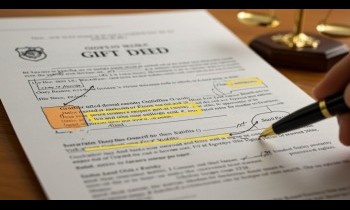Recovery of Debts and the methods to recover debts in India

Date : 24 Dec, 2019
Post By Shivangi Bajpai
When would you need to recover debt? From a loan, credit line or accounts receivable either in part or whole, when the debt cannot be recovered, it becomes bad debt. Additionally, when the enterprise or the asset that becomes owed to repay debt cannot do so anymore, there arises a need to recover debt.
Methods for Debt Recovery There are a lot of methods to recover debt, some are classified as legal, while others are non-legal. Non-legal methods for recovery of debt may include the calling the client or customer for amicably or hiring commission agents for recovering debts. Legal methods of debt recovery include: 1) Civil Remedy: For civil remedy, an aggrieved party can send a legal notice to the debtor for initiating a civil suit for debts due or damages. 2) Criminal Remedy: An aggrieved can file an FIR in the local police station having jurisdiction over the matter, when the case is serious. Post the FIR a criminal case shall be filed and the proceedings will be set in motion. 3) Out of Court Settlements: For a quick and efficient way, under this category, the aggrieved party can resolve the dispute and recover money through mediation, arbitration or negotiation. Laws for Debt Recovery Recovery of money/debt in India can prove to be a taxing task. Due to the presence of a number of laws, deciding as to which law is applicable can be an even tougher exercise. The laws applicable for recovery of money in Indian jurisdiction are as follows: 1) Indian Contract Act, 1872: The reason for debt accrual in India Is largely dishonour of a contract. Or to say, most of the debt recovery matters originate from a Contact. The sections that can be invoked based on the facts and circumstances of the case by the aggrieved party as per Contract Act are as follows: Section 17: Fraud Section 18: Misrepresentation Section 124: Contract of Indemnity Section 126: Contract of Guarantee Section 73: Compensation of Loss or Damage by breach of Contract 2) Negotiable Instruments Act, 1881: This Act becomes applicable in cases of dishonour of cheques under Section 138 for dishonour of bill of exchange or promissory note. Under Negotiable Instruments Act, for recovery of debt, first a legal notice is issued and thereafter proceedings are initiated 3) Code of Civil Procedure, 1908: Under Order 37, a summary suit can be filed for recovery of money for speedy disposal of cases 4) India Penal Code: If debt has accrued to the aggrieved party due to any of the following reasons, the party can approach under the Indian Penal Code. Criminal Breach of Trust, Section 405 and Section 406 Dishonest misappropriation of property, Section 403 Cheating, Section 415 and Section 417 5) Insolvency and Bankruptcy Code, 1905: This Act becomes applicable only in cases where the opposite party becomes bankrupt or insolvent. 6) Recovery of Debts Due to Banks and Financial Institutions (RDDBFI Act), 1993: This becomes applicable when the aggrieved party is any financial institution like a bank or any private finance corp and provides for establishment of Tribunals for adjudication and debt recovery. 7) Securitisation & Reconstruction of Financial Assets & Enforcement of Security Interest (SARFAESI)Act, 2002: This Act has the objective to regulate securitisation and reconstruction of financial assets by establishment of Asset Reconstruction Companies. 8) Arbitration and Conciliation Act, 1996: In the case of a presence of an arbitration clause or when the parties consent to the adoption of arbitration as a means of dispute resolution, Section 7 of Arbitration and conciliation Act can be invoked for an out of court settlement. Legal Requirements The legal requirements for invocation of each Act differs as follows: 1. If the debt amount does not exceed Rs. 10,00,000/- a summary suit can be filed under Order XXXVII of CPC, 1908 or arbitration proceedings can be initiated under Arbitration and Conciliation Act. 2. If the debt amount exceeds Rs. 1,00,000/- one can approach under the following: IBC: When the opposite party has gone bankrupt. SARFAESI: Where security interest has been created o either movable or immovable property as per the provisions of Securitization Act, SARFAESI can be invoked for repossession of mortgaged property without court intervention provided the asset has been declared as an NON-PERFORMING ASSET (NPA). 3. Where the debt amount exceeds Rs. 10,00,000/- the following three laws are applicable: IBC: One can approach under IBC for maximization of the value of assets and claiming proceeds on liquidation of the assets, if maximization fails. Can initiate proceedings under Securitisation Act. Simultaneously an application under DRT can be fled for recovery of dues. Procedure to Recover Debt Debt Recovery Tribunals(DRT) and Debt Recovery Appellate Tribunals(DRAT) were established RDDBFI Act in 1993 for adjudication and for recovery of debts due to banks and financial institutions. Eventually, DRTs and DRATs were overburdened with cases and thus SARFAESI Act was passed for recovery of debt in time bound manner. And recently for recovery of debt and optimisation of assets, IBC was passed. Now, we will see the procedure of debt recovery under these three laws. 1) Procedure for filing cases for recovery of money under RDDBFI Act and SARFAESI Act In order to approach DRT, one can follow two routes. One is through a direct application and the second route is through SARFAESI Act. Direct Application Under this route, the recovery procedure is invoked by filing of an application to the DRT by paying the prescribed fees. This is done s per Article 19(1) of RDDBFI Act. The choice of jurisdiction for filing an application is made using the conditions prescribed under section 19 of the Act. SARFAESI ACT Application can also made to DRT under SARFAESI Act. Under Section 13(2) of SARFAESI Act, once a loan is classified as an NPA by the secured creditor, a notice to the same effect is to be sent to the borrower. The notice must mention the amount that is to be repaid within a period of sixty days. Failing which the creditor exercises his rights under Section 13(4) of the Act. Hereby, Asset Reconstruction Companies (ARCs) purchase NPAs from the banks at a discounted rate allowing banks to recover partial payment for the outstanding debts. 2) Procedure for filing cases for recovery of money under IBC Act Creditors can file an application before the National Company Law Tribunal (NCLT). Once the application is admitted by NCLT, an Interim Resolution professional (IRP) is appointed who takes over the management of the defaulting debtor. IRP makes efforts to ensure that the defaulting debtor remains a going concern as long as possible. Failing which the deflating debtor’s assets are liquidated and the creditors can claim the proceeds. How can an Advocate help? Since the process of debt recovery entails so many legal processes, and has so many overlapping laws, a lawyer can help in filing of summary suits, filing application under DRTs or for filing application before NCLT. Additionally, the formalities associated with the recovery process differ according to the choice of the forum and jurisdiction. Consequently, a lawyer will be able to guide the creditor through the appropriate route for recovery of debt i.e. should the creditor file a summary suit before a civil court, or should the creditor file an application before the Tribunals and if he should file an application before a tribunal, which is the appropriate Tribunal?





